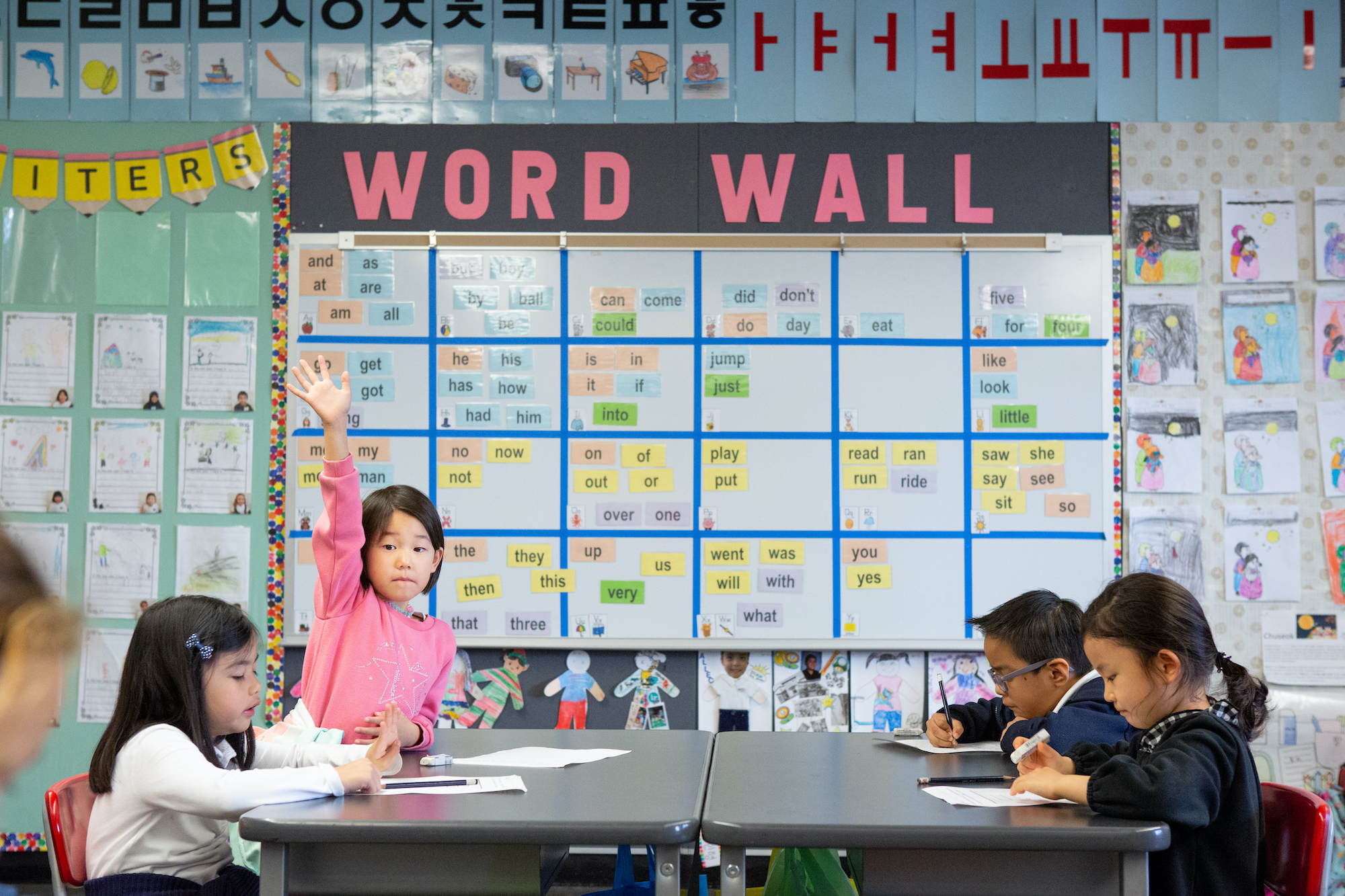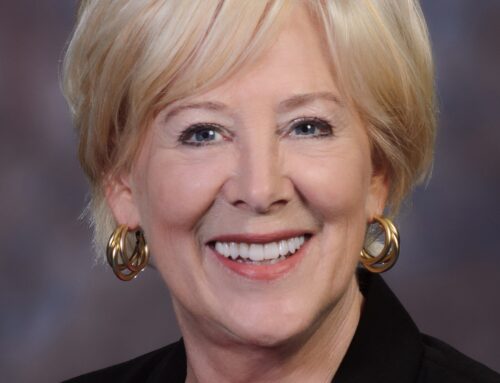Thank you for helping make this a safe and successful back-to-school season!
Our local public schools have adapted and innovated for our children. They have created meaningful learning experiences in the classroom and online and supported students with meals, technology, and mental health resources. They have expanded student services, personalized learning, and specialized programs and practices to prepare our children for their 21st-century future. They have endured the ongoing challenges of the pandemic and stood by their communities through losses and hardships.
Our local public schools need ongoing support to provide safe, supportive, and inclusive learning environments for our children.
Below, you’ll find information you can use, adapt, and share in your messaging in support of our public schools this back-to-school season.
Student & School Professionals Data
- 49.4 million students attended our country’s approximately 98,755 preK-12 public schools
- Our students are served by 3.2 million public school teachers.
- There are approximately 3.4 million additional professional, administrative, and support staff in our public schools.
(https://nces.ed.gov/programs/digest/d19/tables/dt19_105.10.asp?current=yes, https://nces.ed.gov/programs/digest/d21/tables/dt21_208.20.asp?current=yes, https://nces.ed.gov/fastfacts/display.asp?id=372#PK12-enrollment, https://nces.ed.gov/programs/digest/d20/tables/dt20_105.50.asp?current=yes )
Graduation Rates
- The U.S. average ACGR for public high school students increased over the first nine years it was collected, from 79% in 2010-2011 to 86% 2018-19. (Current data not available https://nces.ed.gov/pubs2022/2022144.pdf, page 19)
- In 2019, 93% of Asian/Pacific Islander high school students graduated, followed by 89 percent white, 82 percent Hispanic, 80 percent Black, and 74% American Indian/Alaska Native. (2020 Graduation data not yet available. 2019 and prior available at https://nces.ed.gov/programs/coe/indicator/coi)
College Enrollment
- Of the 3.1 million high schoolers who graduated in the first 9 months of 2020, approximately 63% were enrolled in college in October 2020.
- In 2020, the immediate college enrollment rate was 86% for Asian students, 67% for white students, 60% for Hispanic students and 54% for Black students.
(https://nces.ed.gov/pubs2022/2022144.pdf, page 24)
School Meal Programs
- Prior to the pandemic, almost 22 million students relied on free or reduced-price school meals. When schools closed in March 2020, aided by federal and state funding, and support and flexibility from the USDA, public schools ensured children had access to meals. Many districts across the country provided all their students with free meals for the entire 2021-22 school year.
- Among households with children facing economic insecurity—those in which an adult indicated concern about their ability to pay the next month’s rent or mortgage — food insecurity fell by about 7% between the start of the pandemic (21.3% in April/May of 2020) and summer 2021 (14.2% in July/August 2021) when the most recent USDA policy changes were implemented.
(https://www.fns.usda.gov/news-item/usda-003721 https://www.fns.usda.gov/cn/total-amount-support-to-school-districts https://www.census.gov/library/stories/2022/04/less-hunger-in-at-risk-households-during-pandemic-expansion-of-school-meals-program.html)
Technology
- 59% of adults 18 years old and over who had children under 18 in the home enrolled in school, reported that computers were provided and paid for by schools or school districts (Sept. 2-14, 2020) (https://nces.ed.gov/programs/coe/indicator/tcb)
- 4% reported internet access was provided and paid for by schools or school districts (Sept. 2-14, 2020) (https://nces.ed.gov/programs/coe/indicator/tcb)
Distance Learning
- In May 2021, 26% of 4th-8th grade students were enrolled in remote instruction, 23% were enrolled in hybrid instruction and 50% in in-person instruction. (https://nces.ed.gov/fastfacts/display.asp?id=372#PK12-distancelearning)
- As of June 7, 2021, 45% of monitored districts were hybrid, 54% were fully in person, and 1% of districts were fully remote (https://www.returntolearntracker.net/instructional_status/)
- As of May 22, 2022, 99% of students and 99.7% of districts were in person. (https://www.ed.gov/coronavirus/data)
- Ed Week Research Center conducted two years’ worth of surveys administered to a nationally representative sample of teachers, principals, and districts leaders. March 2020 – Jan. 2022 (https://www.edweek.org/technology/pandemic-tech-tools-that-are-here-to-stay/2022/03)
- By the end of 2021, nearly 60% of respondents said their experiences using ed-tech during remote learning had made them more willing to use technology with their students
- Three categories of technology that Ed Week Research Center survey data suggest are likely to stick around:
- Videoconferencing platforms – in the week after school closed due to COVID-19, 43% of educators and administrators surveyed identified online meeting and conferencing systems as a critical purchase – the third-highest priority for them behindhand sanitizer and cleaning supplies
- Social-emotional learning – by the summer of 2022, 46% of respondents were already receiving professional development on how to provide social-emotional support to remote students
- Digital math tools – tools to address academic recovery and deepen instruction
Students with Disabilities
- 7.2 million students received special education services in the school year 2020-21. (https://nces.ed.gov/programs/coe/ataglancehttps://nces.ed.gov/programs/coe/indicator/cgg)
English Language Learners
- Approximately 5.1 million English learner students were enrolled in public elementary and secondary schools in the fall of 2019. (Current data is not yet available)
- Approximately 3.8 million English learners’ home language is Spanish or Castilian (2019)
(https://www2.ed.gov/about/offices/list/ocr/ell/charts.html, https://nces.ed.gov/programs/digest/d21/tables/dt21_204.20.asp?current=yes, https://nces.ed.gov/programs/digest/d21/tables/dt21_204.27.asp)
Mental Health & Counseling Services
- With suicide now the leading cause of death among children ages 10-14, states are also providing funding to help districts meet the recommended ratios of students to mental health professionals, including counselors, psychologists, and social workers.
- In 2021, 38 states enacted nearly 100 laws providing additional resources to support mental wellbeing in K-12 schools, according to the National Academy for State Health Policy.
- In 2022, dozens of additional school mental health bills became laws in at least 22 states. Broadly, the new state laws aim to upgrade school mental health resources and create comprehensive plans to prevent teen suicides and promote child mental wellbeing.
- At least 16 states and DC, now require K-12 teachers and other school staff to take training courses on how to recognize mental distress in students and what to do when they see it.
COVID-19
- As of June 2, approximately 10.6 million children ages 5-17 were reported to have had COVID. (https://covid.cdc.gov/covid-data-tracker/#demographics) (https://protect-public.hhs.gov/)
- As of February 2022, 47% of all public schools had 76-100% of their staff vaccinated, 16% of all public schools had 51-75% of their staff vaccinated, 8% of all public schools had 26-50% of staff fully vaccinated, 1% of public schools had 0-25% of staff fully vaccinated, and 31% don’t know their students’ vaccination status. (https://ies.ed.gov/schoolsurvey/spp/#tab-2)
Photo by Allison Shelley for EDUimages.





